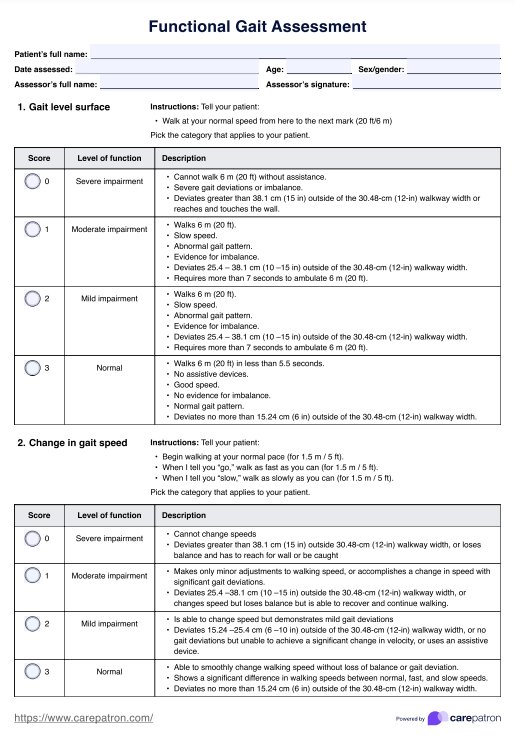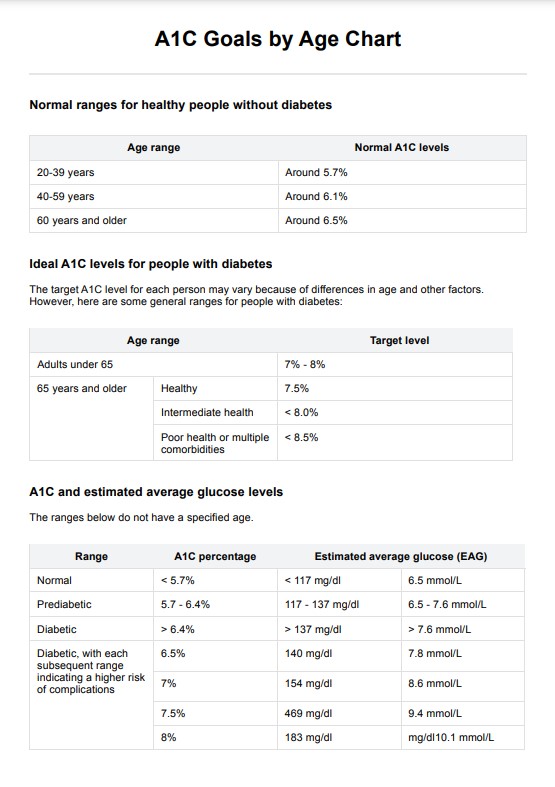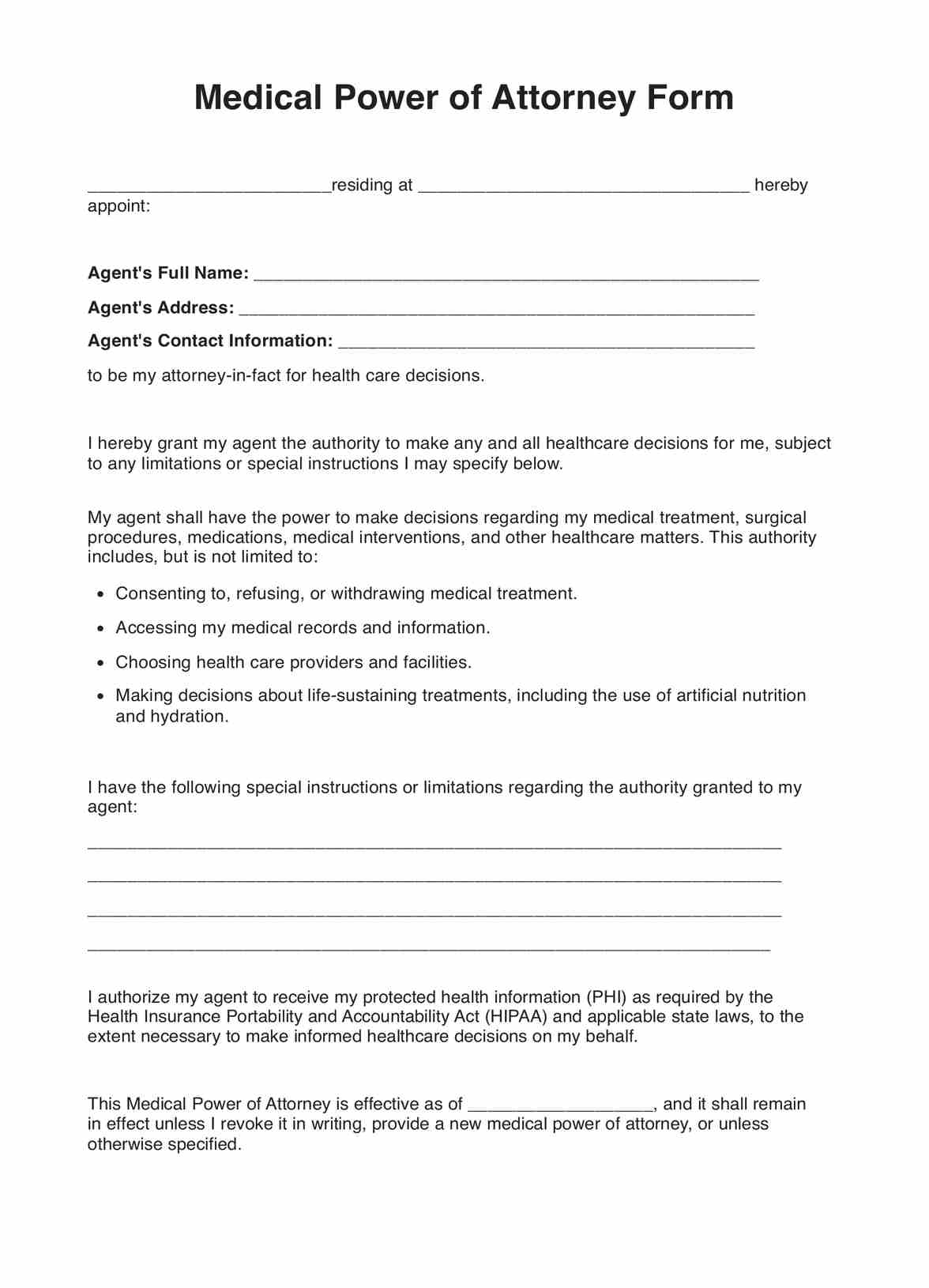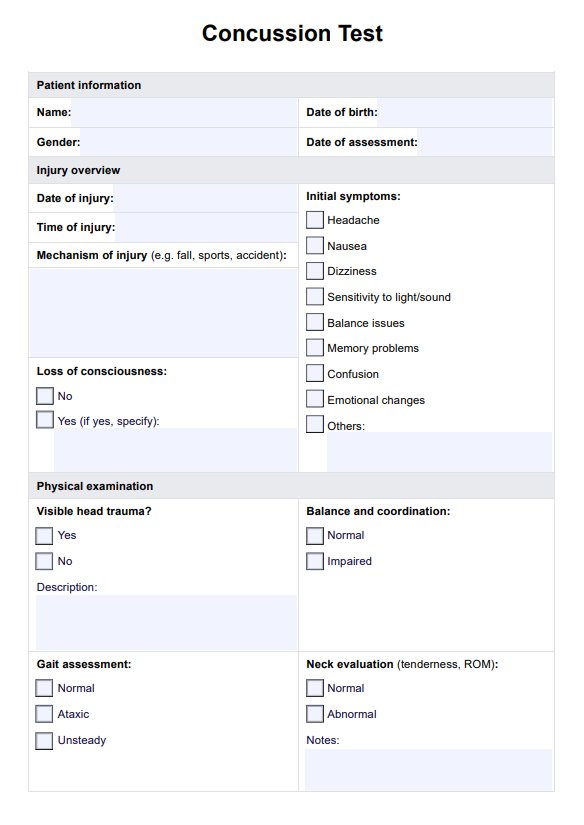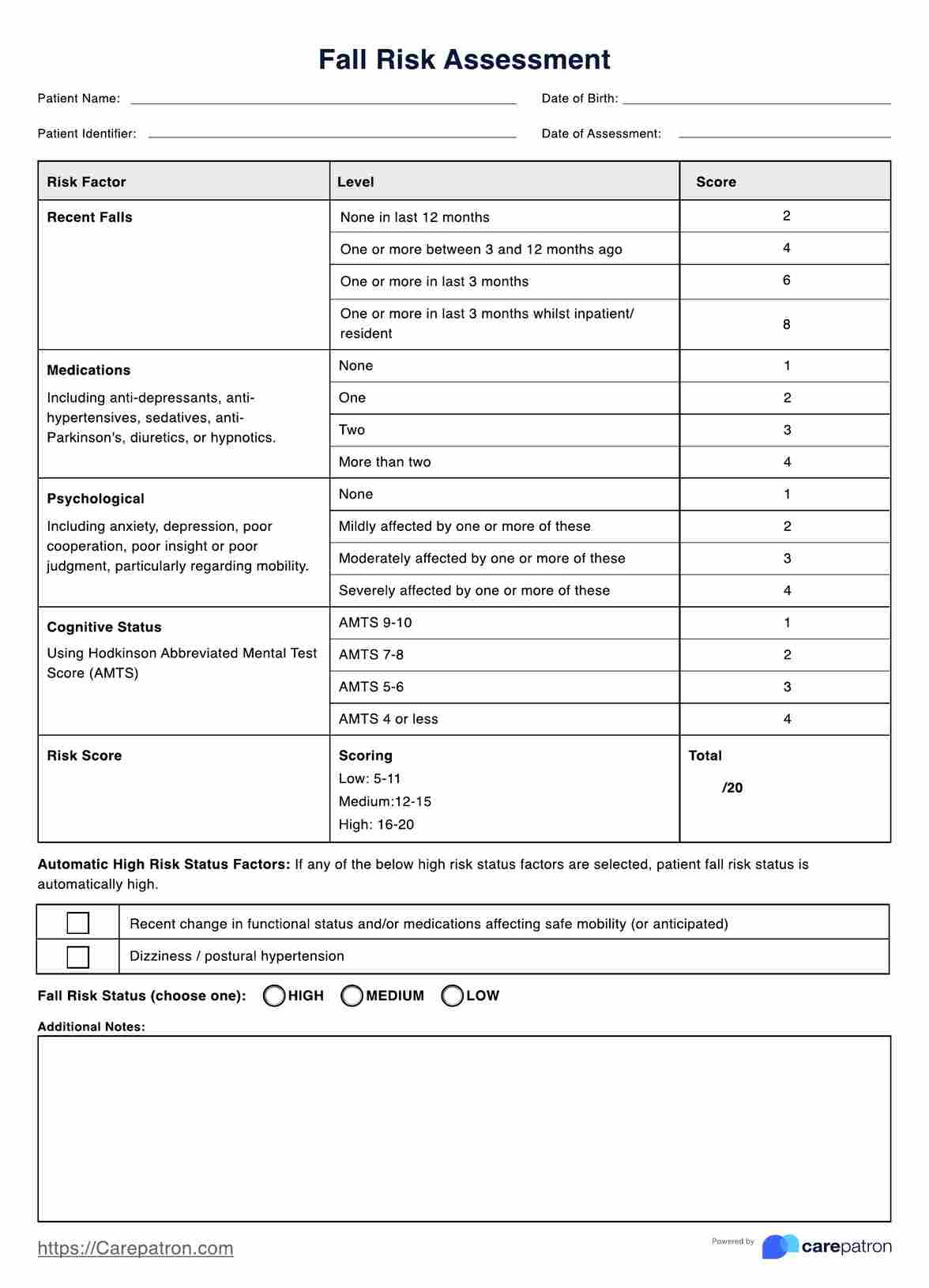Arterial Blood Gas
Learn more about the arterial blood gas test, what it�??s for, and what substances it measures.
�?�


What is an Arterial Blood Gas (ABG) Test?
An arterial blood gas test or ABG test is a medical test that measures the levels of three things in one�??s arterial blood: oxygen, carbon dioxide, and PH (alkalinity and acidity). It�??s used to check lung function, specifically its capability to remove carbon dioxide and move oxygen in the blood. The results can indicate and assess conditions related to metabolic processes and circulatory and respiratory systems.
Arterial Blood Gas Template
Arterial Blood Gas Example
How does it work?
Step One. Access and Download the Template
Have a copy of the digital and printable Arterial Blood Gas (ABG) test template available whenever needed. Obtain a copy you can use by either:
- Clicking the �??Download Template�?� or �??Use Template�?� button
- Searching �??Arterial Blood Gas�?� in Carepatron�??s template library�??s search bar on the website or app
Step Two. Assess and Interview the Patient
Before you request an ABG test, you must either do a physical examination or interview your patient to evaluate their current condition. It�??s also best to explain the procedure, enumerate the risks, ask for their consent, and provide what they need to prepare for.
Step Three. Collect the Blood Sample
On the collection day, the patient will give the template to the practitioner or lab technician to prove that their referring physician has requested an ABG test. Only then will the one in charge of the test collect and analyze the blood sample.
Step Four. Analyze and Interpret
After the test, the patient may leave the request form with the lab technician as a reference or a guide. If they have their own template, the patient may keep it in the records in case any future referring physicians want to review it.
Step Five. Securely Store the Template
Storing records is as easy as giving them to a referring physician to store them at a secure physical location or on Carepatron, a free clinical documentation software.
When Would you use this Test?
Even if multiple practitioners can use the arterial blood gas (ABG) test, those who may benefit the most are pulmonologists and other referring physicians caring for patients who need their respiratory system assessed before diagnosis, during surgery, etc. Said healthcare practitioners can use the test when:
- Diagnosing and Evaluating: When the patient is experiencing severe respiratory distress and has or is suspected of having a lung disease, the referring physician can use the template to request an ABG test that will help them evaluate the lung function, identify the disease severity, and diagnose the patient if the disease is unknown.
- Monitoring: Practitioners caring for patients in ICUs on mechanical ventilation, in NICU because of a critical illness/premature birth, or about to undergo surgery may use the template to request an ABG test. The results they receive will be useful in assessing their patient�??s medical condition and deciding what type of medical intervention to do if needed. Aside from those, the test can also be requested using a template when checking the effectiveness of a particular medication.
What do the Results Mean?
Although the lab technician or practitioner-in-charge of analyzing and interpreting the results, in case you need to provide a general idea of the results of each substance means, here�??s a list of them below:
- pH level: The normal range of pH levels is between 7.35 and 7.45. Any higher it indicates alkalosis, and any less indicates acidosis.
- PaO2 or Partial Pressure of Oxygen: Any lower than the normal range of 80-100 mm H6 indicates that the body has difficulty moving oxygen from the lungs to the blood.
- PaCO2: If the patient�??s PaCO2 levels are less than 35mmHg, it indicates respiratory alkalosis.
- Bicarbonate (HCO3): Normal bicarbonate levels are between 22 and 25 mEq/L. If the patient�??s levels are lower than the lower limit, they have metabolic acidosis. On the other hand, if their levels are higher than the upper limit, they may have metabolic alkalosis.
- Base Excess (BE): The normal range is between -2 and +2 mmol/L. It means there�??s a high amount of bicarbonate in the blood because of metabolic alkalosis.
- Oxygen Saturation (SaO2): Anything lower than 95% means oxygen has difficulty binding with hemoglobin.
Remember that interpretations are best if you consider multiple results.
Commonly asked questions
Physicians, pulmonologists, critical care physicians, nurses, respiratory therapists, surgeons, and neonatologists are among the healthcare professionals who will typically request an arterial blood gas test.
The request forms to conduct an arterial blood gas test are commonly used when the patient is in respiratory distress when one is monitoring the severity of a patient�??s respiratory condition, and when one needs to check the effectiveness of a medication for the patient�??s condition. For more situations, refer to the �??When Would You Use this Test?�?� section above.
Collecting the blood sample takes a few minutes. However, processing it, analyzing the results, and formulating an interpretation can take a few hours, depending on the physician in charge of the procedure.


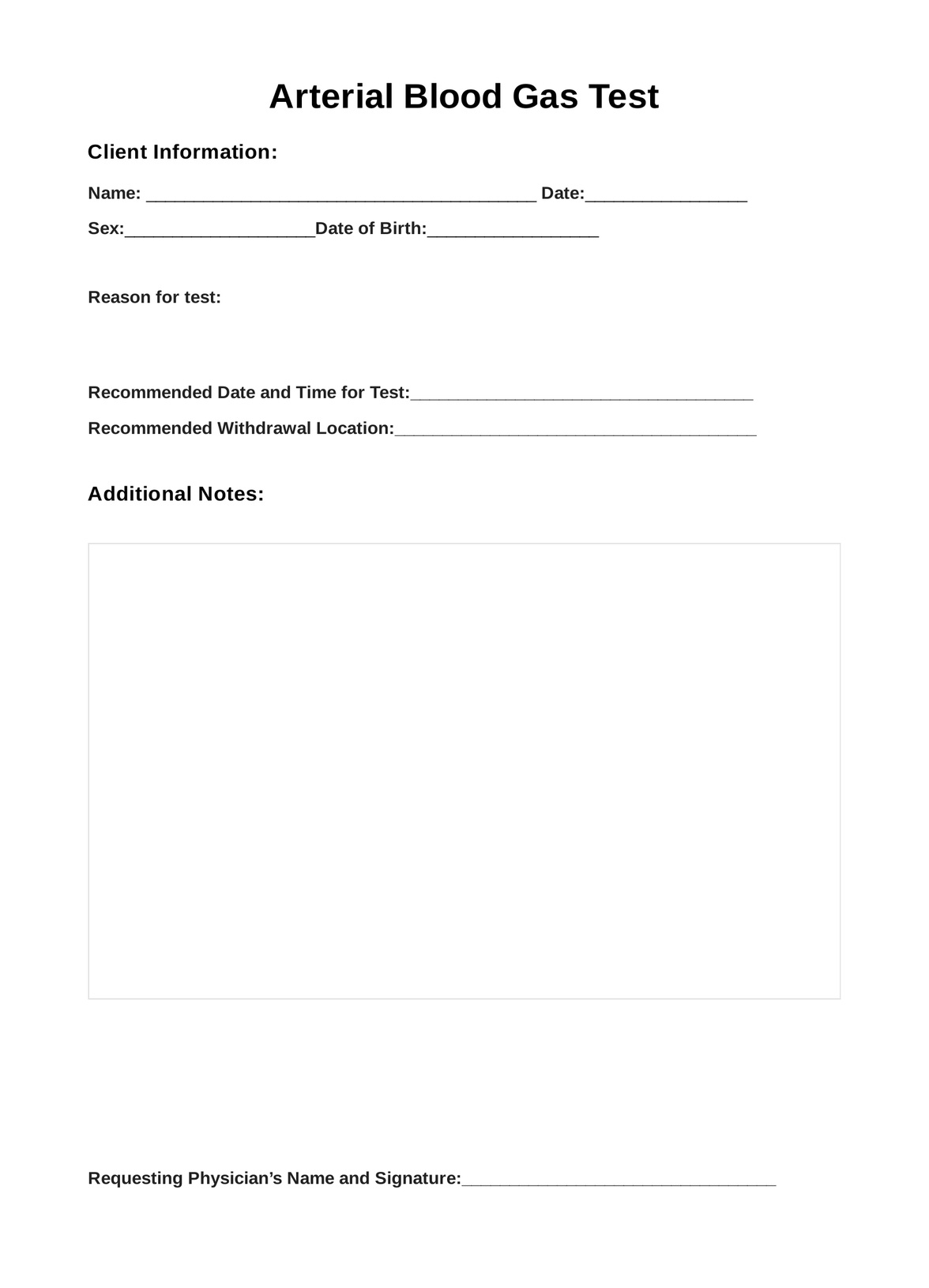












-template.jpg)
























































































